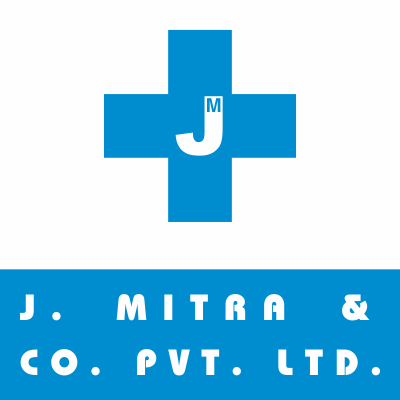Advances in Rapid Diagnostic Tests for Dengue
Dengue fever, often called “breakbone fever,” is an illness caused by the dengue virus. This disease is transmitted to humans through mosquito bites and remains a significant public health concern, especially in tropical and subtropical regions. Most will get better in 1–2 weeks. Some people develop severe dengue fever and need care in a hospital. There is no specific treatment for Dengue. The focus is on treating pain symptoms. Most instances of dengue fever can be managed at home using pain relievers. However, in severe cases, Dengue can be life-threatening. This contagious ailment affects millions globally each year. Timely and precise diagnosis is essential for promptly initiating suitable treatment, saving lives, and alleviating strain on healthcare infrastructures. Rapid diagnostic tests (RDTs) have emerged as promising tools to transform Dengue diagnosis, offering a swift and accessible means of identifying the infection. This article explores the importance of rapid typhoid tests, advancements, benefits, and challenges for effective integration.
The importance of rapid testing for dengue diagnosis: Rapid testing for dengue fever is not only crucial for improving individual patient outcomes. It also plays a pivotal role in public health efforts to control and manage the spread of the disease. It supports early intervention, accurate diagnosis, and effective public health responses, ultimately contributing to reduced morbidity and mortality associated with dengue fever outbreaks.
Types of RDTs for Dengue
Rapid diagnostic tests (RDTs) for dengue fever typically fall into two main types based on what they detect: NS1 antigen tests and antibody (IgM/IgG) tests. Additionally, some RDTs combine NS1 antigen and antibody detection in a single test (combo tests), offering a comprehensive diagnostic approach that enhances sensitivity and specificity across different stages of infection.
- NS1 Antigen Tests:
Principle: These tests detect the dengue virus non-structural protein 1 (NS1) in the blood.
Timing: NS1 antigen is detectable early in infection, usually within the first few days of symptom onset and up to around nine days after symptoms onset.
Advantages: High sensitivity and specificity in the early phase of illness when viral loads are high, aiding in prompt clinical management and patient triage.
- Antibody (IgM/IgG) Tests:
Principle: These tests detect dengue-specific antibodies the immune system produces in response to the virus.
Timing: IgM antibodies typically appear around 3-5 days after symptom onset and persist for several weeks, while IgG antibodies develop later and can persist for months to years.
Advantages: It is convenient, rapid (results within 15-30 minutes), and helpful for diagnosing secondary dengue infections after the acute phase (IgG presence indicates past infection).
Limitations: IgM antibodies may cross-react with antibodies from other flaviviruses (e.g., Zika virus), potentially leading to false-positive results, especially in regions with multiple circulating flaviviruses.
Advantages of Rapid Testing for Dengue Diagnosis
Rapid testing for dengue diagnosis offers several significant advantages that significantly impact both individual patient care and public health strategies:
- Early Detection and Treatment: RDTs for Dengue can detect the presence of NS1 antigen or dengue-specific antibodies (IgM/IgG) within the first few days of symptom onset. Early detection allows healthcare providers to promptly initiate appropriate management, including fluid replacement therapy and monitoring for signs of severe Dengue, which can improve patient outcomes.
- Different Febrile Illnesses: Dengue fever shares symptoms with other febrile illnesses such as malaria and Zika virus infection. Rapid tests help distinguish Dengue from these diseases. It is imperative to ensure that patients receive the appropriate care they require while avoiding unnecessary treatments or delays in diagnosis.
- Reduction in Transmission: Early diagnosis through rapid testing can reduce the duration of viremia (the presence of the virus in the bloodstream), thereby potentially decreasing the risk of onward transmission of the dengue virus through mosquito bites.
- Resource Utilization: In resource-limited settings, where access to laboratory facilities and skilled personnel may be limited, rapid tests offer a practical and cost-effective diagnostic solution. They are simple to use, require minimal training, and deliver results rapidly, allowing timely interventions without centralized laboratory infrastructure.
- Supports Public Health Response: Rapid testing enhances the ability of public health authorities to respond swiftly to dengue outbreaks. It aids in resource allocation, the deployment of healthcare personnel, and the implementation of targeted interventions to control the spread of the disease.
- Minimally Invasive and Convenient: Rapid tests typically require a small blood or serum sample, making them less invasive and more convenient for patients than traditional laboratory-based diagnostic methods.
Rapid testing for Dengue diagnosis offers several advantages:
In recent years, there have been notable advancements in RDTs for dengue fever, such as:
- Quick Results: Rapid tests provide results within 15-20 minutes, allowing for prompt diagnosis and immediate medical intervention.
- Early Detection: Early detection facilitates early treatment, crucial for managing Dengue and preventing complications.
- Point-of-Care Testing: These tests can be carried out at the point of care, such as in clinics or the field, without requiring advanced laboratory equipment. This is especially advantageous in remote or resource-limited areas.
- Cost-Effective: Rapid tests are generally more cost-effective than traditional laboratory-based tests, making them more accessible in economically challenged regions.
- Facilitates Epidemiological Surveillance: Rapid testing helps in quickly identifying Dengue outbreaks and monitoring the spread of the disease in communities.
- Improves Patient Management: With rapid results, healthcare providers can promptly initiate appropriate management strategies, such as fluid management and monitoring for severe Dengue complications.
- Reduced Turnaround Time: Unlike conventional tests, which may take hours to days to produce results, rapid tests provide immediate feedback, expediting clinical decision-making.
- User-Friendly: Many rapid tests are designed to be user-friendly and require minimal training, enabling a more comprehensive range of healthcare professionals to administer them effectively.
- Supports Public Health Responses: Rapid testing contributes to faster identification and isolation of Dengue cases, crucial for preventing further transmission during outbreaks.
These advances in RDTs for dengue fever hold great promise for improving patient outcomes, reducing transmission rates, and ultimately controlling the global burden of this vector-borne disease. However, continued research and development efforts are needed to enhance the performance, affordability, and accessibility of these diagnostic tools further.
Conclusion
Rapid diagnostic tests can transform Dengue diagnosis, enabling swift intervention and improving patient outcomes. Their accessibility, accuracy, and ease of use make them indispensable tools, especially in areas with limited healthcare resources.














